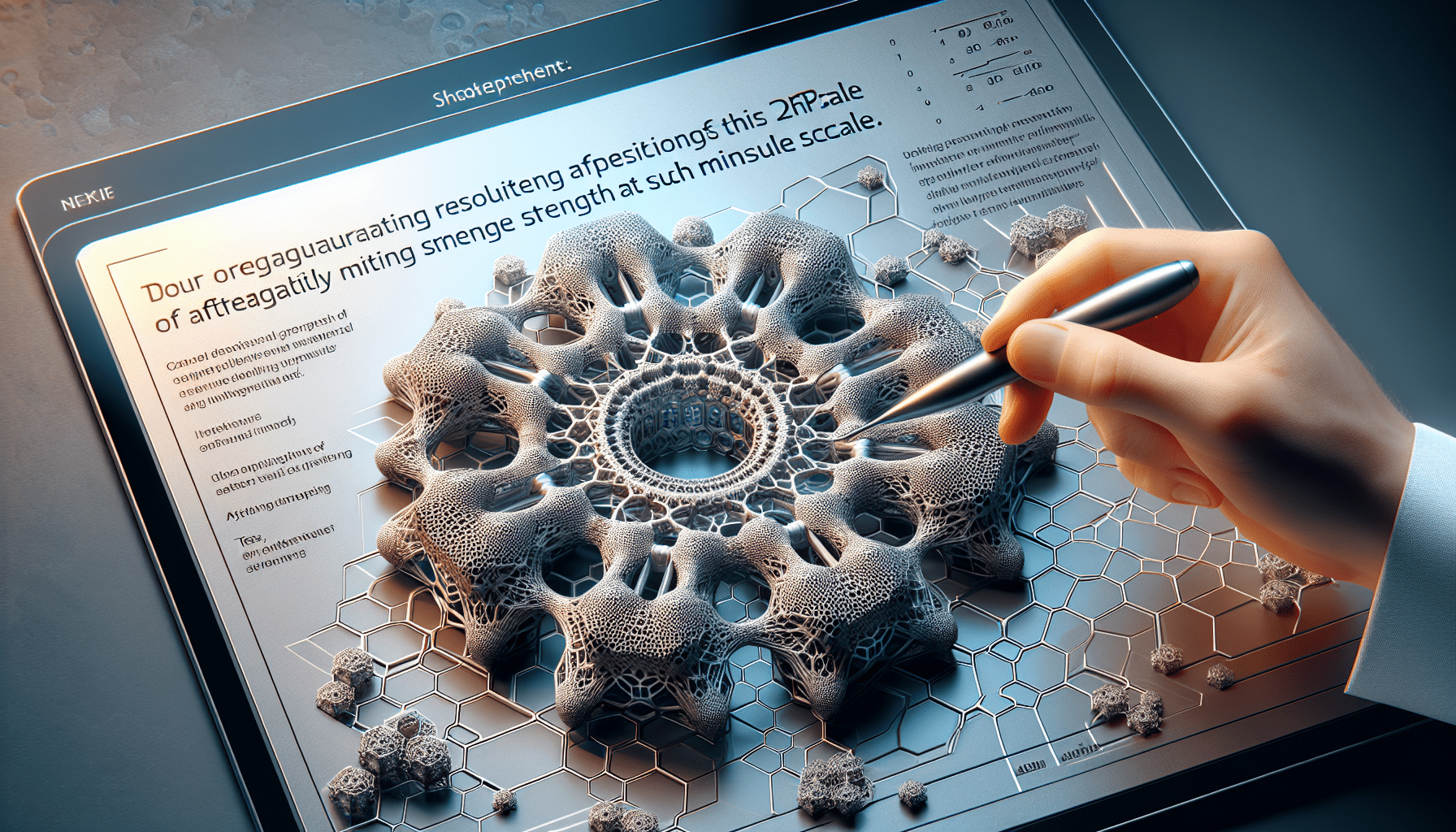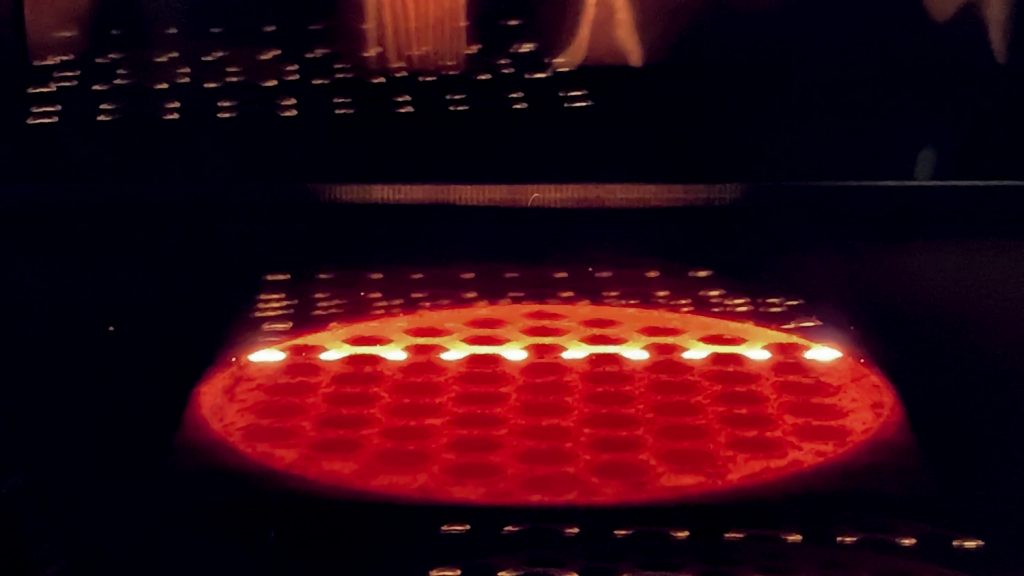FLASHFORGE Adventurer 5M 3D Printer with Fully Auto Leveling, Max 600mm/s High Speed Printing, 280°C Direct Extruder with 3S Detachable Nozzle, Core XY All Metal Structure, Print Size 220x220x220mm
$259.00 (as of June 18, 2025 23:32 GMT +00:00 - More infoProduct prices and availability are accurate as of the date/time indicated and are subject to change. Any price and availability information displayed on [relevant Amazon Site(s), as applicable] at the time of purchase will apply to the purchase of this product.)Discover the fascinating world where cutting-edge technology meets traditional craftsmanship! MIT’s Self-Assembly Lab team has innovated a groundbreaking technique for rapidly 3D-printing furniture using liquid metal. This new process enables the creation of durable, functional furniture in mere minutes, offering a radical shift in the way we think about manufacturing in construction and industrial design.
By depositing molten aluminum into a bed of glass beads, the material hardens quickly into robust structures that can withstand post-print machining. The choice of aluminum provides not only strength but also versatility as an endlessly recyclable material. Stay tuned as we explore the incredible potential of this method and how it aims to revolutionize metal manufacturing and rapid prototyping.
$30 off $400+ Anycubic Products with code AC30OFF
Overview of Liquid Metal Printing
Definition and Basics
Liquid metal printing is an innovative technique in the realm of additive manufacturing. Unlike traditional 3D printing that utilizes various polymers or powdered metals, this method employs molten metal to create objects. Essentially, it involves depositing molten metal, such as aluminum, layer by layer along a predefined path to build up a three-dimensional structure. The metal solidifies quickly, resulting in a durable item ready for further post-print machining, if necessary.
Historical Context
The concept of using molten metals for printing is relatively new. While metal printing itself has been around for a while, traditional methods often involve complex procedures, including re-melting sections of the material that can lead to inconsistencies such as cracking or warping. Liquid metal printing offers a streamlined alternative that keeps the metal in a molten state throughout the process, reducing structural issues and enhancing the integrity of the final product.
Key Applications
Liquid metal printing has diverse applications, especially in industries where strong, durable metal parts are essential. From construction and architecture to automotive and aerospace sectors, this innovative technique is revolutionizing how metal components are manufactured. Moreover, thanks to its ability to rapidly produce large objects, it holds significant potential in furniture design and other sectors requiring robust but customizable metal parts.
MIT’s Self-Assembly Lab and Their Contribution
Introduction to the Research Team
The Self-Assembly Lab at MIT is comprised of a diverse group of researchers dedicated to pushing the boundaries of material science and manufacturing techniques. Key members of the team include Zain Karsan, Kimball Kaiser, Jeremy Bilotti, Bjorn Sparrman, Schendy Kernizan, Jared Laucks, and Skylar Tibbits. Each team member brings a unique set of skills and expertise, contributing to the lab’s groundbreaking research.
Overview of MIT’s Mission
The Massachusetts Institute of Technology (MIT) strives to advance knowledge and educate students in science, engineering, and technology. The institution focuses on tackling some of the world’s most pressing problems through innovative research and education. The Self-Assembly Lab embodies this mission by exploring new manufacturing techniques that can potentially transform various industries.
Significance of the Research
The Self-Assembly Lab’s research into liquid metal printing is highly significant. Their innovative approach aims to overcome the traditional challenges associated with metal 3D printing, such as structural inconsistencies and time inefficiencies. By developing a method that maintains the metal in a molten state throughout the process, they have made strides in producing more reliable and robust metal objects quickly. This research not only advances the field of additive manufacturing but also opens new opportunities for sustainable and efficient production methods.
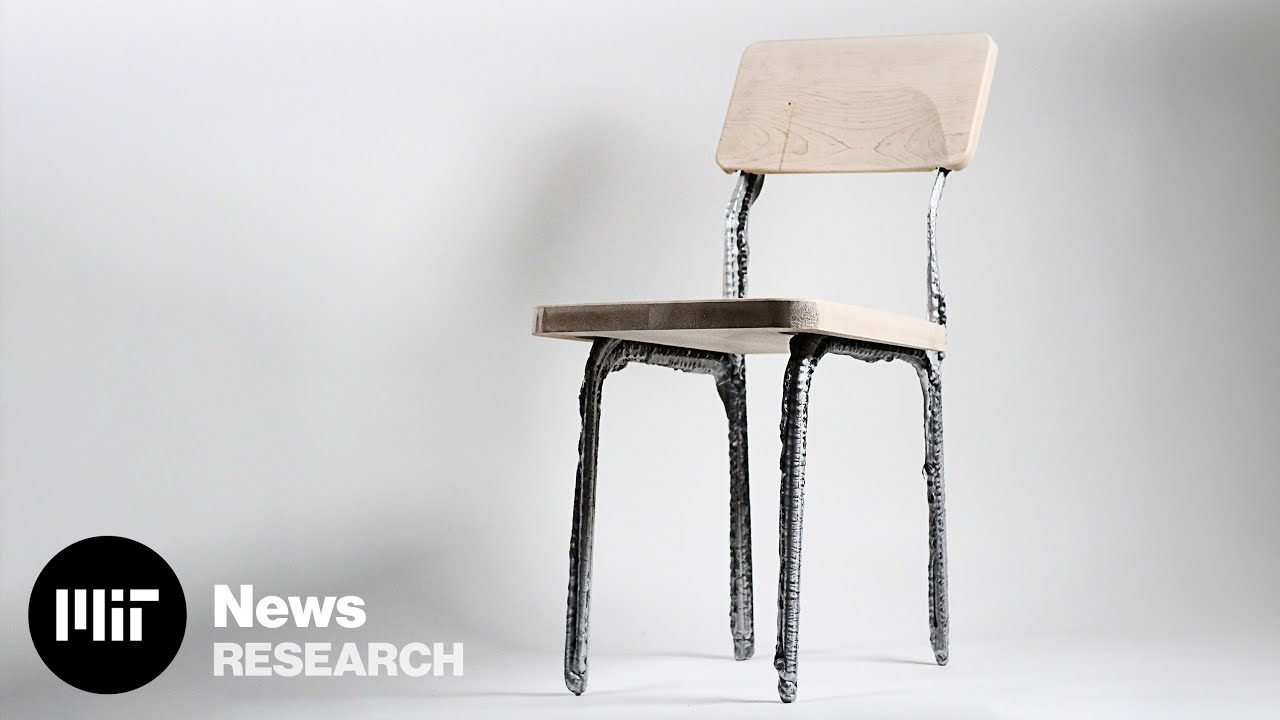
Buy Photon Mono M5 Get Free 1KG Resin
The Process of Liquid Metal Printing
Molten Aluminum Deposition
The liquid metal printing process begins with molten aluminum. Aluminum is chosen due to its common use in various construction applications and its high recyclability. The molten aluminum is deposited along a predefined path, ensuring that it follows the exact specifications of the design being printed.
Use of Glass Beads Bed
To facilitate rapid solidification and maintain precision in the print, the molten aluminum is deposited into a bed of tiny glass beads. These glass beads help to stabilize the molten metal, allowing it to solidify into a robust and durable structure. This innovative approach minimizes the potential for warping or cracking, common issues in traditional metal printing techniques.
Solidification of the Structure
As the molten aluminum interacts with the glass beads, it quickly solidifies into a sturdy 3D structure. This rapid solidification is crucial for maintaining the integrity and durability of the printed object. Once solidified, the 3D printed structure is ready for post-print machining processes, such as milling and boring, to create functional parts like furniture.
Technical Specifications
Graphite Crucible and Ceramic Nozzle
The process utilizes a graphite crucible to hold the molten aluminum at a high temperature. This crucible is specially designed to withstand the extreme heat necessary to keep aluminum in a liquid state. The molten aluminum is then gravity-fed through a ceramic nozzle, which guides the flow of the metal into the glass beads bed with precision.
Temperature Control
Maintaining a consistent temperature is vital in this printing method. The aluminum must remain molten to ensure smooth deposition and solidification. Any variations in temperature could lead to inconsistent printing and potential defects in the final product. The temperature control system within the graphite crucible and the ceramic nozzle ensures that the aluminum stays at the optimum temperature throughout the printing process.
Gravity Feeding Mechanism
The use of a gravity feeding mechanism is another technical marvel in this process. Relying on gravity to guide the molten aluminum reduces the need for complex mechanical systems, thus simplifying the overall design. This mechanism ensures a smooth and continuous flow of metal, aiding in the rapid and efficient creation of large-scale objects.
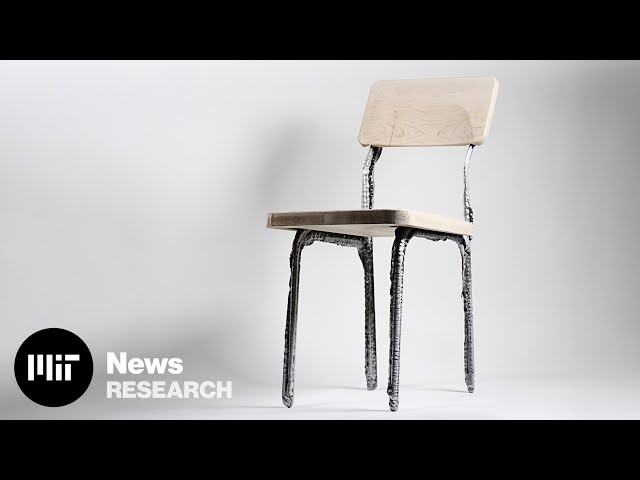
Advantages Over Traditional Metal Printing
Avoidance of Remelting Issues
One of the significant advantages of liquid metal printing is the avoidance of remelting issues. Traditional metal printing methods often require portions of the metal to be remelted, leading to structural weaknesses like cracking or warping. By keeping the aluminum molten throughout the process, these issues are effectively eliminated, resulting in stronger and more reliable printed objects.
Structural Integrity
Because the metal remains in a molten state until it solidifies in the final form, the structural integrity of the printed object is significantly enhanced. This method ensures a uniform composition, reducing the likelihood of defects and improving overall durability. Printed objects can withstand more rigorous use and are better suited for applications requiring high strength and reliability.
Speed and Scale Advantages
Liquid metal printing offers notable speed and scale advantages over traditional methods. The process enables rapid production of large objects, such as furniture, in a matter of minutes. This efficiency not only saves time but also opens up new possibilities for mass-producing customized metal parts without compromising on quality or structural integrity.
Applications in Furniture Design
Functional Furniture Creation
Using liquid metal printing for furniture design allows for creating functional and aesthetically appealing pieces. From robust tables to intricate chairs, this technology can produce durable furniture capable of enduring daily use. The speed and efficiency of the process make it an attractive option for designers and manufacturers looking to innovate in the furniture industry.
Potential for Customization
Customization is a significant benefit of liquid metal printing in furniture design. Designers can create unique, bespoke pieces tailored to specific requirements without the limitations of traditional manufacturing methods. The precision and versatility of the process enable the production of intricate designs, meeting the growing demand for personalized and customized furniture.
Durability and Strength
Liquid metal printed furniture boasts impressive durability and strength due to the method’s inherent advantages. The solidification process produces metal pieces with high structural integrity, ensuring that the furniture can withstand substantial weight and stress. This makes it ideal for both residential and commercial applications where durability is crucial.
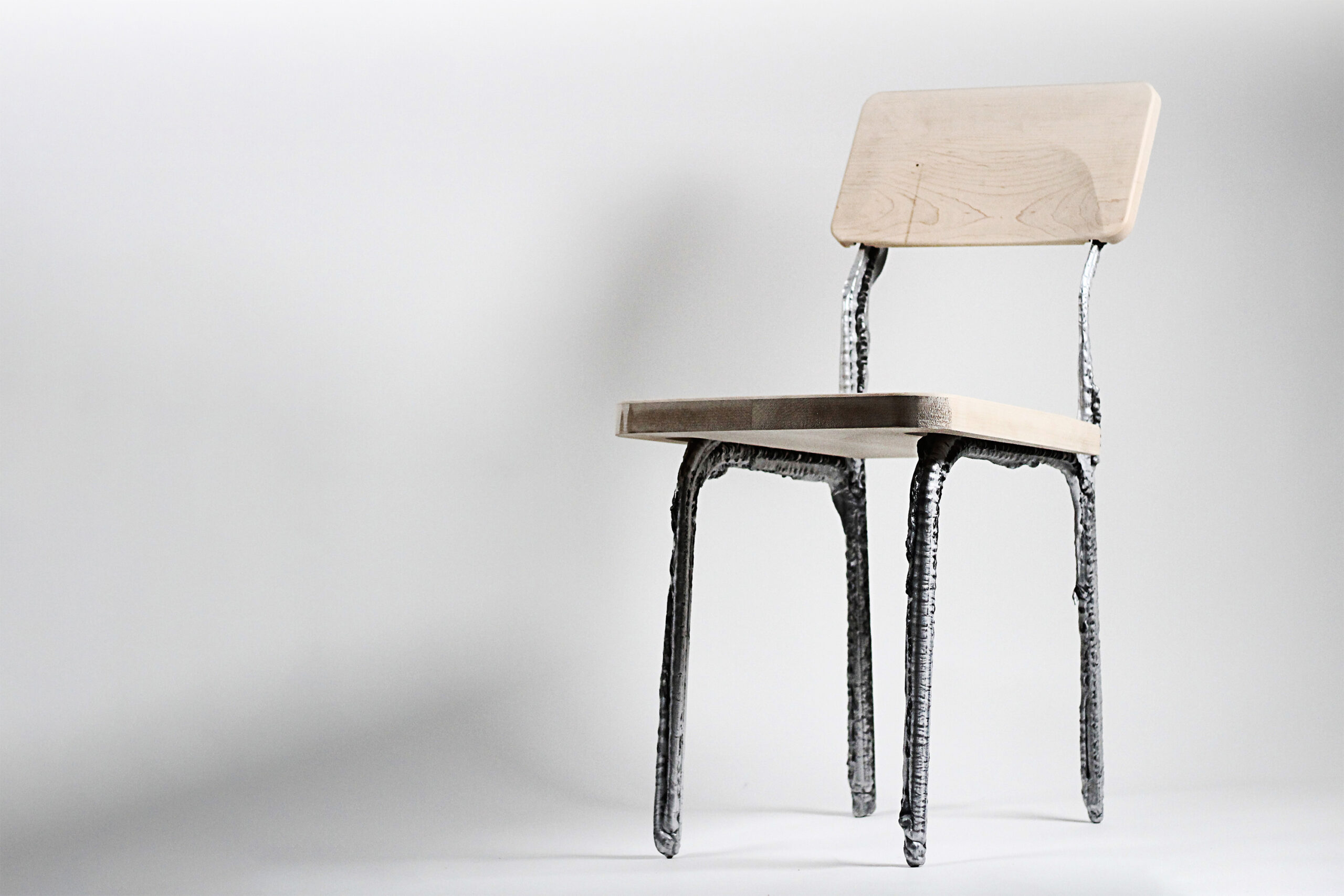
Sustainability and Recycling
Use of Recycled Aluminum
A standout feature of liquid metal printing is its compatibility with recycled aluminum. By using recycled materials, this method promotes sustainable manufacturing practices. Aluminum is infinitely recyclable, meaning it can be reused repeatedly without losing its properties. This makes the process environmentally friendly by reducing the demand for raw materials.
Environmental Impact
The environmental impact of liquid metal printing is significantly lower compared to traditional metal manufacturing techniques. The process minimizes waste and energy consumption, contributing to a reduced carbon footprint. Additionally, the use of recycled aluminum further enhances its sustainability, making it a greener alternative for producing metal parts and products.
Circular Economy Benefits
Liquid metal printing aligns well with the principles of a circular economy. By utilizing recycled materials and reducing waste, it promotes a more sustainable and environmentally responsible manufacturing approach. This method not only produces durable and high-quality products but also contributes to a closed-loop system where materials are continually reused and repurposed.
Challenges and Limitations
Resolution vs. Speed Trade-offs
Despite its numerous advantages, liquid metal printing faces some challenges and limitations. One key challenge is the trade-off between resolution and speed. While the process is fast and efficient, it may sacrifice some level of detail and precision. In applications where fine details are crucial, this trade-off could be a limiting factor.
Material Sticking Issues
Another challenge is material sticking issues within the nozzle and print bed. Ensuring consistent flow and preventing the material from adhering to the nozzle or other parts of the machine is critical for maintaining the quality of the printed object. Researchers are continuously working on refining the technology to overcome this issue and improve the process’s reliability.
Consistency in Heating
Maintaining consistent heating throughout the printing process is essential for successful outcomes. Any fluctuations in temperature can affect the molten aluminum’s flow and solidification, leading to potential defects in the final product. Achieving and maintaining uniform heating is an ongoing challenge that requires further refinement and innovation.
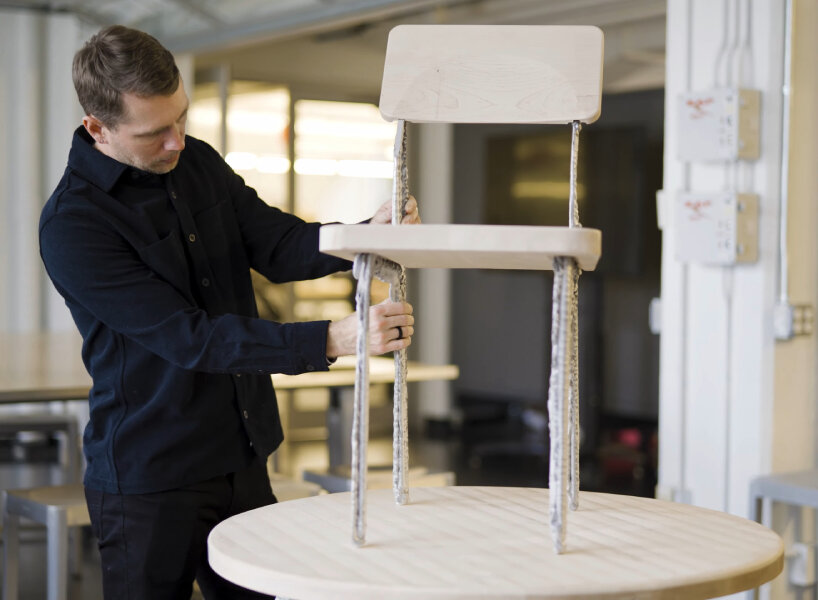
Future Directions and Improvements
Iterating on Machine Design
The research team at MIT’s Self-Assembly Lab aims to iterate on the current machine design to address existing challenges and enhance performance. By making incremental improvements and testing new configurations, they hope to optimize the technology for broader applications and better results.
Enhancing Flow Control
Improving flow control of the molten aluminum is another crucial area for future development. Enhanced flow control will minimize material sticking issues and ensure more consistent deposition, leading to higher-quality prints. Researchers are exploring various methods, such as advanced nozzle designs and better temperature regulation, to achieve this goal.
Expanding Material Choices
Currently, the focus has been on using aluminum due to its recyclability and common usage. However, expanding material choices to include other metals with similar properties could open up new possibilities for liquid metal printing. Exploring and experimenting with different metals will allow for greater versatility and application in various industries.
Conclusion
Summary of Key Points
Liquid metal printing represents a groundbreaking advancement in additive manufacturing. By leveraging molten aluminum and innovative deposition techniques, this method overcomes the limitations of traditional metal printing, offering enhanced structural integrity, rapid production times, and greater sustainability through the use of recycled materials.
Impact on Metal Manufacturing
The development and refinement of liquid metal printing technology have the potential to significantly impact metal manufacturing. With its ability to produce large, durable objects quickly and efficiently, it offers a new approach to creating metal parts and products, from furniture to industrial components, transforming how we envision and execute metal fabrication.
Potential for Further Research
As promising as liquid metal printing is, it remains a field ripe for further research and development. Addressing current challenges, expanding material options, and refining machine designs will pave the way for even more innovative applications. The ongoing work of researchers in this area is crucial for unlocking the full potential of liquid metal printing and its future contributions to various industries.
$30 off $400+ Anycubic Products with code AC30OFF






